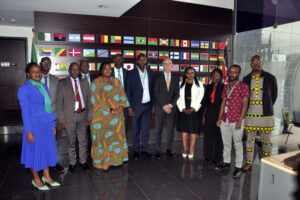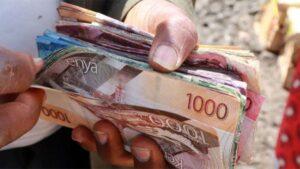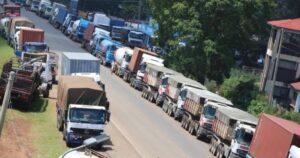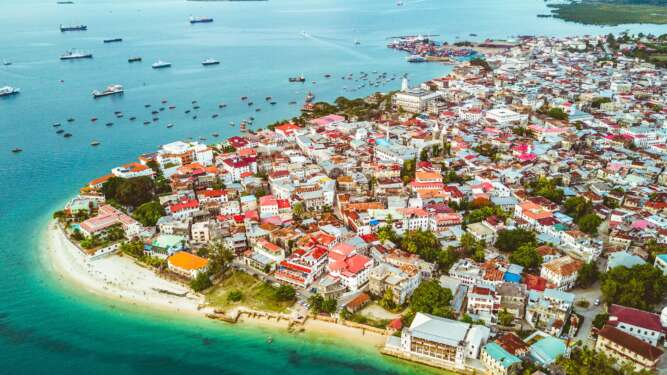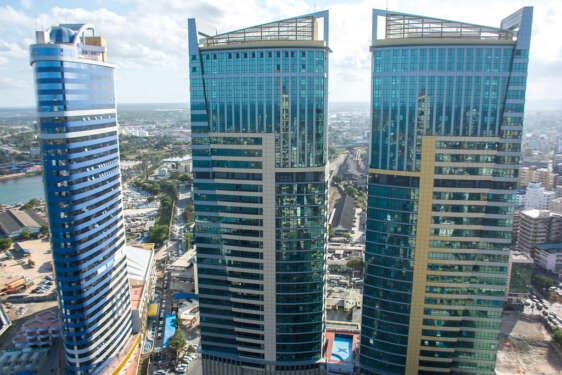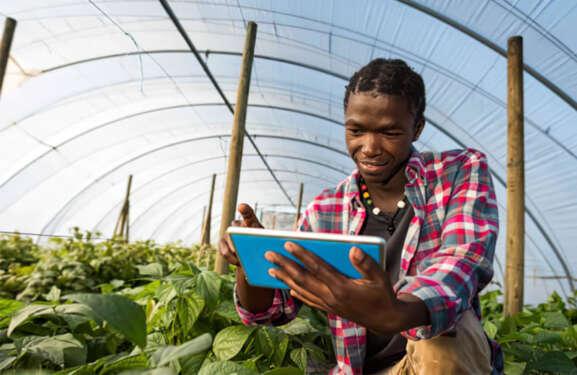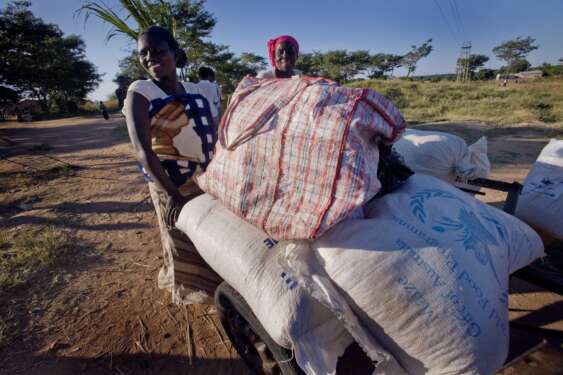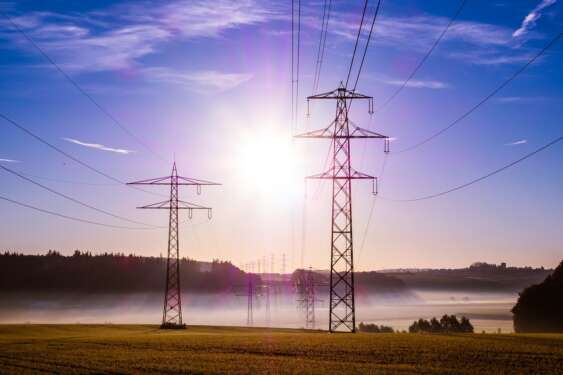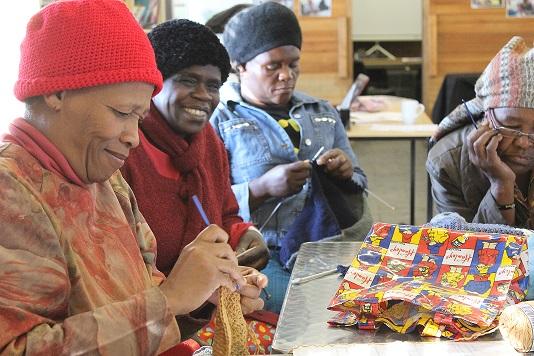- Kenyan Farmers Receive $2M Boost from Africa Fertiliser Financing Mechanism
- Brace for High Interest Rates for a Longer Period World Bank Warns Kenya
- Kenya-Ethiopia Trade Relations: Legislators Advocate for Policy Alignment to Boost Ties
- Visualising the state of debt in Africa 2024
- Abu Dhabi radiates optimism as over 300 startups join AIM Congress 2024
- TLcom Capital Raises $154 million in Funding to Boost Its African Growth
- Africa’s $824Bn debt, resource-backed opaque loans slowing growth — AfDB
- LB Investment brings $1.2 trillion portfolio display to AIM Congress spotlight
Year: 2020
The Tanzanian central bank (Bank of Tanzania – BoT) published a detailed economic bulletin for the quarter ending September 2020, which showed Zanzibar’s economy taking a nosedive contracting by 2 per cent compared to a growth rate of 5.2 per cent in the corresponding quarter in 2019.
Zanzibar—the semi-autonomous region of Tanzania, is taking various measures to enhance economic and trade liberalization that can pave a smooth way for the private sector to get engaged in the local, regional and international arena.…
Africa’s tech habitude is on the rise. Internet usage has risen significantly on the continent. On top of that, the advent of the coronavirus pandemic accelerated the prospect of growth in the digital sphere. E-commerce is one such opportunity that affords businesses access to broader market opportunities in every arena. According to McKinsey, a worldwide consulting firm, the e-commerce industry in Africa is expected to grow to a $75 billion industry by 2025.
E-commerce is growing. It is accelerated by a growing and youthful population that is increasingly exposed and has an appetite for greater efficiency and improvement of business to first-world standards. The African diaspora has also contributed to this growing demand as people have become more exposed to what is going on around the world. Technology itself dissolves existing borders and opens up trade regionally and internationally.…
The year 2020 had a lot of events across the development aisle, and Tanzania’s economic upgrade from low to lower-middle-income status by the World Bank (WB), is worth noting as one of the success stories.
There have been a number of forecasts on the economy of Africa and Tanzania at large, with a variety of predictions which point at different directions.
On June 11 2020, the Tanzanian government confidently, via the Ministry of Finance and Planning stated that the nation’s economy is expected to grow at a rate of 5.4 per cent in 2020 compared to earlier estimates of 6.9 per cent.…
It is not every day that young men and young women with burning and out-of-the-ordinary business ideas get to meet an angel investor in an elevator or meet a venture capitalist by fluke.
A local TV show based in Tanzania made that scenario a reality, by bending the ropes of bureaucracy and lengthy proposal-writing to make big dreamers, change-makers and transformative business owners maximize their reach.…
It is with great joy and pride to say Africa is mounting the digitalization hill and none of the 54 countries seems to tire of the climb. From the emergence of mobile money in East Africa to the use of drone technology in monitoring farmland activities in Ghana, all seem as ground-breaking as the other digital operations executed in Africa.
Through the years East Africa has seen a surge in fintech exceeding expectations; services such as M-Pawa in Tanzania, M-Shwari and M-Pesa in Kenya (offered by Vodacom Tanzania and Safaricom Kenya respectively) has not only digitalized financing en masse for the unbanked but enabled digitalization in East Africa to soar to new heights.…
Over $50 billion worth of aid is poured into Africa every year. Most of it is targeted towards poverty reduction, hunger, and achieving sustainable development goals. Yet Africa remains among the poorest of the poor. The level of disease still continues to stay high and mortality rates remain high. Unemployment levels are soaring and the standard of living remains very poor.
Lack of access to electricity and clean drinking water coupled with lack of food in some areas is very much a reality. 85% of Africans are surviving on an income less than $5.50 per day. In trying to take stock of the situation an assessment of the efficacy of aid is a necessity.
Given the amounts of aid that have flowed in, there are questions as to why the state of the continent continues to be pitiful. Does aid stifle economic growth? Does aid have the transformative power …
The continent faces a stark challenge of energy availability. More than 60% of the population has no access to electricity. Moreover, a lack of clean energy for cooking remains a challenge. Even those with access to power face severe power cuts triggered by load-shedding and faults. Both triggers can be traced back to infrastructural challenges, including a lack of adequate generation capacity and aging infrastructure.
According to the World Bank’s State Of Access To Modern Energy Cooking Services Report, only 10 percent of sub-Saharan Africa has access to modern sources of cooking energy.
The effect of this inadequacy creates a ripple effect of problems. In terms of health, people are affected by diseases such as respiratory illnesses born out of using unclean energy sources.
Further, the environment suffers. In order to obtain firewood for cooking and other purposes, people are forced to cut down trees, often most indiscriminately. In …
The New Year 2021 has begun on a high note with the reality of the coronavirus vaccine shining across the globe. The year 2020 will certainly be etched in the minds of many people across the world for the wrong reasons. It is the year that the coronavirus caused death, illness and economic despair across the world.
In Africa, the COVID-19 pandemic has hugely torpedoed the continent’s war against poverty. According to the IMF, developed economies will shrink by around 6% in 2020 while emerging markets and developing ones will shrink by 1%. With more people living close to the international poverty line in developing nations, it is imperative to note that low and middle income countries will suffer the greatest repercussions in terms of extreme poverty.
Also Read:BUSARA CENTER AIMS AT POVERTY ALLEVIATION
The definition of poverty entails more than just the lack of income and productive resources …
The realities on the African continent are unpalatable. The levels of financial, education and energy poverty among several other scales of poverty are extremely high. Yet the continent lies on a bed of natural resources and is adorned by some of the most beautiful scenery in the world.
On top of that the biggest resource—its people—are capable of churning out ideas and innovation that can change the narrative on the continent. Africa is far from hopeless. Recognizing this, the African Union has set out to take steps towards achieving the realisation of a first class economic powerhouse by 2063.
The African Continental Free Trade Area (AfCFTA)
In a bid to achieve this agenda, a free trade area that seeks to create one common market through the integration of African countries was born. Of the 55 African countries 54 signed the agreement with Eritrea choosing to watch from the …
In 2013, the African Union penned the Agenda 2063 policy meant to revolutionize Africa into a formidable powerhouse among global players.
Key pillars of the policy include a thrust toward poverty eradication and sustainable development. The key to the achievement of this policy and any other that promotes Africa’s future lies in transforming the economic fortunes of its people.
Africa’s population is on a growth trajectory and is expected to double by 2025.One of the most significant challenges that the continent faces addresses the critical issue of absorbing these large numbers into meaningful income-generating opportunities.
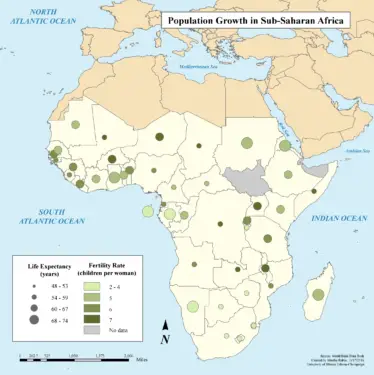
Currently, the employment gap vis-à-vis the growing employable population is widening. This is in part due to the coronavirus pandemic that created a situation of dwindling demand in labor after lockdowns and travel restrictions. Also, the current education gap creates a lack of access to education as well as skills training among employable youth. As …
